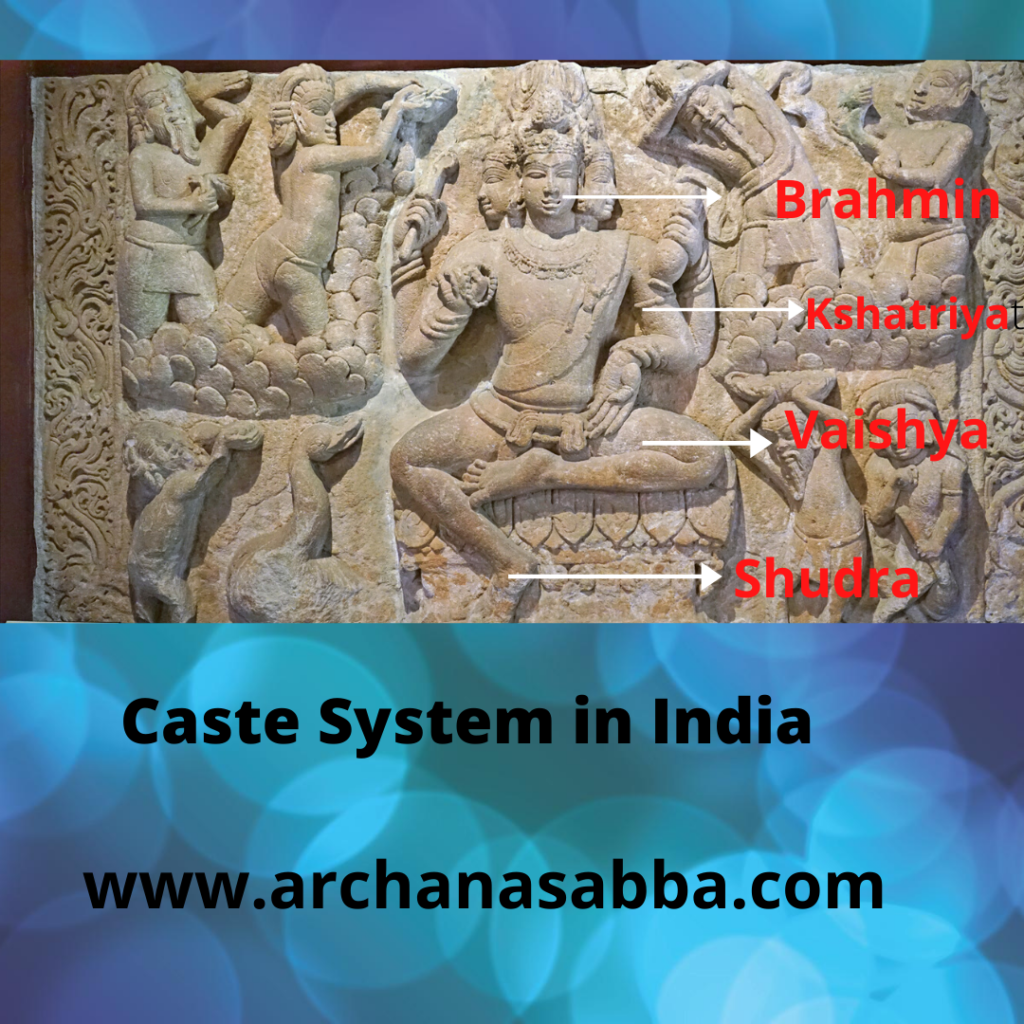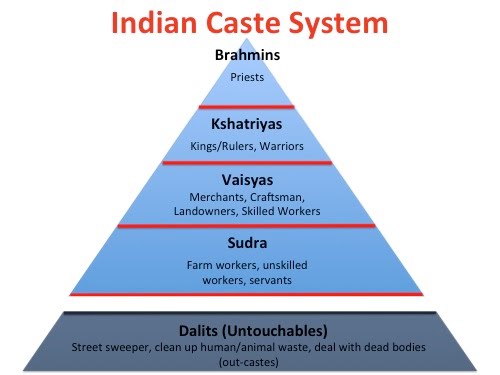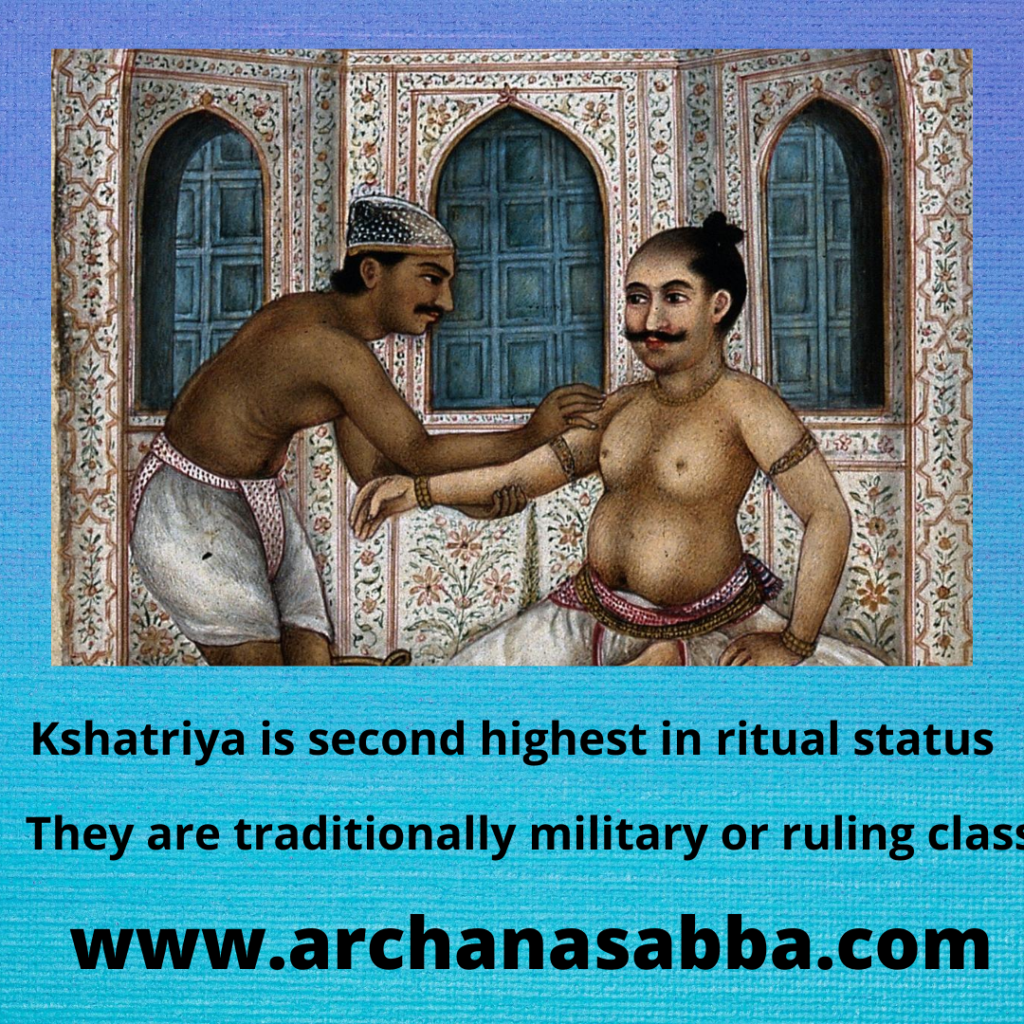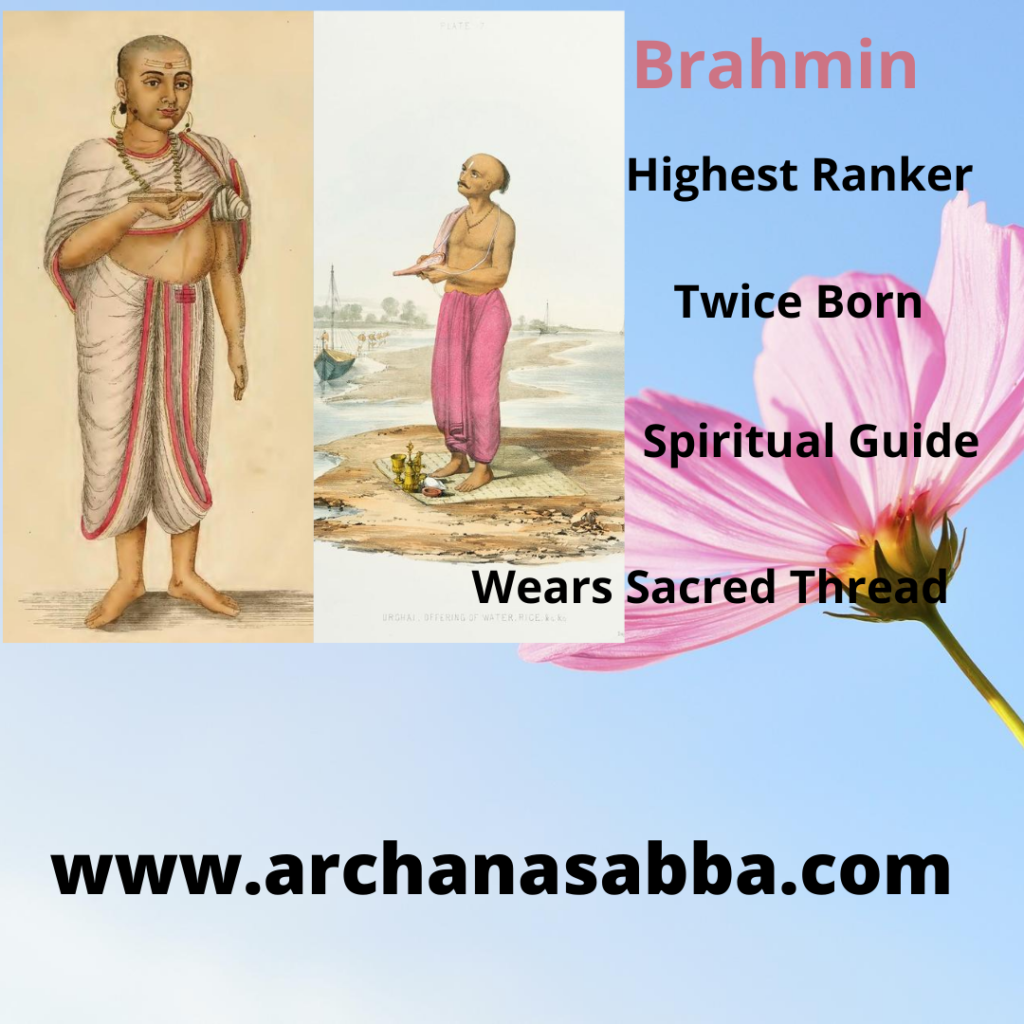Introduction
The caste system in India is closely connected with the Hindu philosophy, religion, custom, and convention. The caste system in India is believed to have had a divine origin and sanction. The Varna system which was prevalent during the Vedic period was mainly based on the division of labor and occupation. The caste system owns its origin in the Varna system. There are around 3000 castes and 25,000sub-castes in India.
The caste system in India is one of the world’s oldest forms of surviving social stratification systems. The caste stratification of Indian society had its origin in the chaturvarna system ( Chatur means Four). According to chaturvarna system, the Hindu society was divided into four main varnas –
- Brahmins ( a priest and scholar)
- Kashtriyas (ruler and soldier)
- Vaishyas (merchant)
- Shudras (peasant, laborer, and servant)
The first three castes in the chaturvarna system are called as ‘twice-born’ or ‘dwija’ as the men from these castes are entitled to wear the sacred thread at the Vedic rite of upanayana. The Shudras were not allowed to wear the sacred thread. There is a fifth category which falls outside the varna system and it consists of those who are known as “untouchables” or Dalits; generally they are assigned tasks which are ritually polluting.
Manusmriti is widely regarded as the most important book on Hindu law and it acknowledges and justifies the caste system in India for maintaining the order and regularity in the society.
According to Risely, caste is a collection of families who bear a common name and claim to have a common descent from a mythical ancestor professing to follow the same hereditary calling and respected by the individuals who are competent to give an opinion as forming a single homogeneous community.”
For Louis Dumont, the caste system is not a form of stratification but a special form of inequality. The major attributes of caste are the hierarchy, the separation, and the division of labor.
Origin of the word Caste: The term Caste was derived from the Spanish word “Casta” meaning breed or race. It means people of the same caste belonged to the same race. The word caste also signifies race or kind. The Sanskrit word for caste is called varna, which means color.
The term, caste was used by the Britishers who ruled India until 1947. The British who wanted to rule India had effectively made lists of the Indian communities. They used two terms to describe Indian communities i. e.Castes and Tribes. The term caste was used for Jats and for other varnas. The Tribes are those communities who lived in the deep forests, jungles, and mountains far away from the main population










Would love to perpetually get updated outstanding weblog! .
Thank you
Valuable information. Lucky me I discovered your web site by accident, and I’m shocked why this coincidence didn’t happened earlier! I bookmarked it.
Thank you so much
Enjoyed looking at this, very good stuff, thanks.
Thank you
Great post, you have pointed out some wonderful details , I too think this s a very wonderful website.
Thank you
I don’t even know how I ended up here, but I thought this post was great. I don’t know who you are but definitely you’re going to a famous blogger if you aren’t already 😉 Cheers!
I love this web site. Thanks you
Thanks for your helpful post.
Great blog, keep it up!
Have a look at my page: special
Like your web-site.
Thank you for sharing with us, I conceive this website genuinely stands out : D.
Thank you so much
You’ve been very helpful to me. Thank you!
Welcome
Can you write more about it? Your articles are always helpful to me. Thank you!
Welcome
Thanks for the help
Welcome
Thanks for your help and for posting this. It’s been great.
Welcome